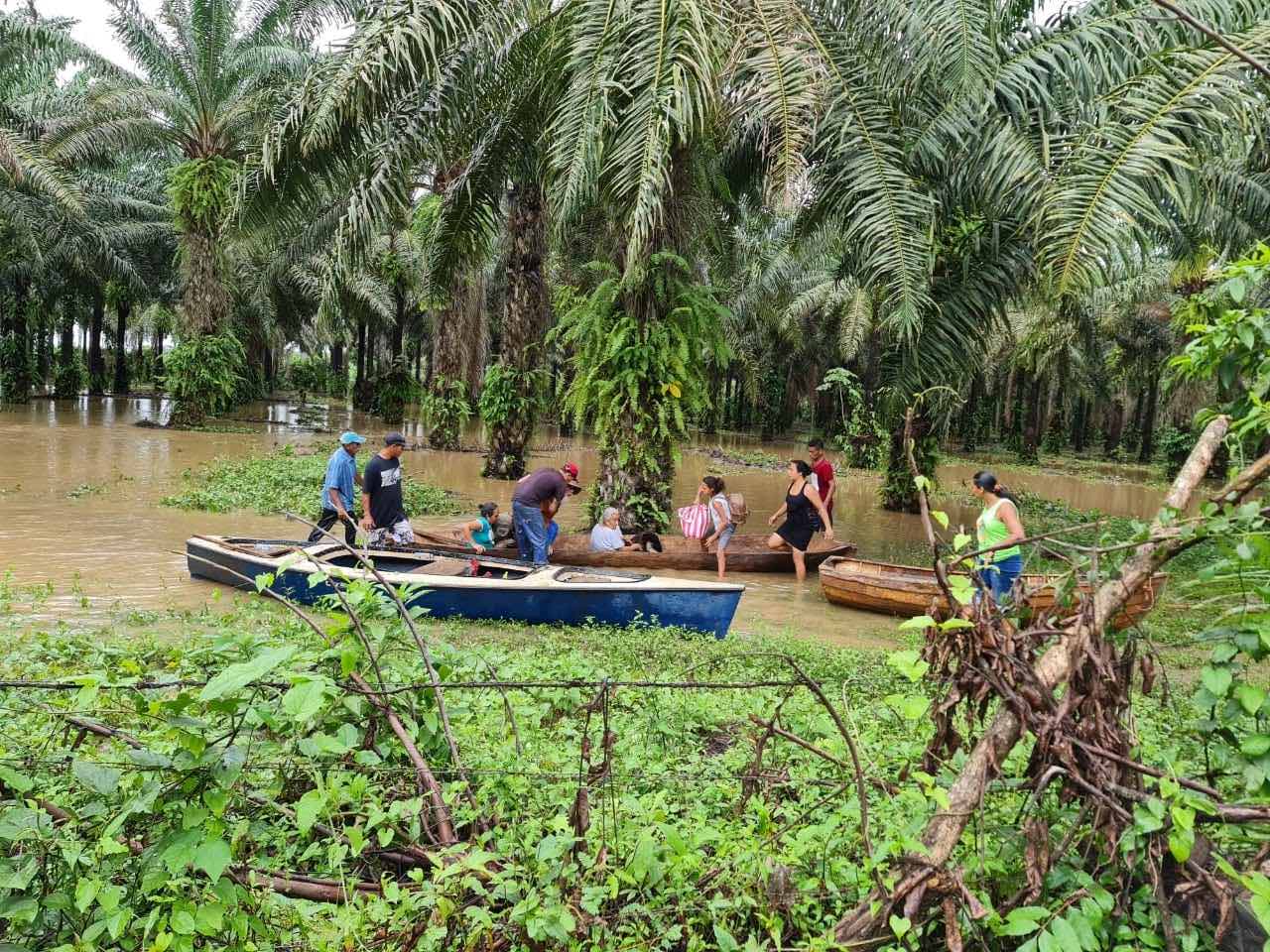People in Honduras used boats to evacuate the affected areas following Hurricane Eta’s passing through the Central American region.
Hurricane Eta struck an already vulnerable Central America
Eta made landfall on Nicaragua’s north-eastern shores as a Category 4 hurricane on 3 November, slowly moving across the northern part of the country and into eastern Honduras. Over three days it continued northwestward into Guatemala and then to the Caribbean.
During its passage, Hurricane Eta downgraded to a tropical storm and then to a tropical depression, drenching vulnerable communities across Nicaragua, Honduras, Guatemala and El Salvador. The United States’ National Hurricane Center (NHC) recorded more than 600mm of rain at the storm’s peak and maximum wind speeds as high as 235 km/h.
Eta caused rising river levels, flooding, and landslides that have spurred immediate action from national disaster management agencies in these countries. The broad reach and range of Eta’s rains also caused significant impacts in Panama, Costa Rica, Belize, and southeastern Mexico, which also saw the combined effects of a passing cold front.
The effects of climate change
In coffee plantations, smallholders have seen the devastating effects of climate change through crises such as the coffee leaf rust epidemic and other menaces to their crop yields. Change to expected rain patterns through widespread drought on the one hand and flash flooding on the other directly impacts crop yields, resulting in higher food insecurity and economic vulnerabilities for producers.
According to NHC, typically six out of an average of 12 tropical storms become hurricanes over the Atlantic Ocean, Caribbean Sea, or Gulf of Mexico during the yearly hurricane season. In 2020, 29 storms had formed over the Atlantic by the time Eta became a tropical storm, which broke the previous record from 2005.
Meteorological events such as Eta have also become more intense and destructive as a result of climate change. According to a study published in Nature, in the late 1960s, a typical hurricane’s intensity would decline by 75 per cent during the first day after making landfall, whereas now the decline has dropped to 50 per cent.
Our findings suggest that as the world continues to warm, the destructive power of hurricanes will extend progressively farther inland.” -Li, L., Chakraborty, P. Slower decay of landfalling hurricanes in a warming world. Nature
According to a Germanwatch report published in 2019, five out of ten countries most affected by climate change in the 20-year period between 1998 and 2017 years belong to the Central American and Caribbean regions. Among the top three most affected globally by extreme weather events in that timeframe is Honduras, at second place after Puerto Rico. Nicaragua ranks at number six.
What can we expect from the Hurricane Eta aftermath?
The storm impacted more than 3.3 million people in the region. Approximately 114,000 are in shelters, unable to return to their communities. Many of them are the producers who bring food to our table every day. Eta also left thousands of hectares of damaged crops as well as significant road infrastructure and property damage.
Damages have yet to be fully quantified, but we can expect interruptions in the fruits and vegetables, palm oil, and coffee value chains as a result of the storm damage.
Now, a few days after Hurricane Eta has passed through, a new storm called Iota threatens the area.
“Category 5 Hurricane Iota is expected to produce extreme winds and life-threatening storm surge along portions of the coast of northeastern Nicaragua, along with life-threatening flash flooding in Central America”, warned the NHC on 16 November.
In the short and medium term, we can expect difficult consequences, such as production shortages or delivery interruptions, in the various agro value chains in the Central America, Mexico and Caribbean region, an area already in vulnerable conditions prior to Hurricane Eta making landfall earlier this month and Hurricane Iota following days later.
Difficult events like these show that while farmers struggle to achieve a fair price for the crops they produce, they also have to face the effects of climate change. These effects are ultimately transferred to us all, the end consumers.
For Solidaridad, this is a powerful motivator and the reason why we commit to continue working to support recovery efforts. We are actively in communication with our partners to assess damage. We will use this information to generate a response that will help producers, their communities and the private sector to restore livelihoods and business as quickly as possible and to address the long-term needs of building a resilient and regenerative economy for climate change mitigation and adaptation.

